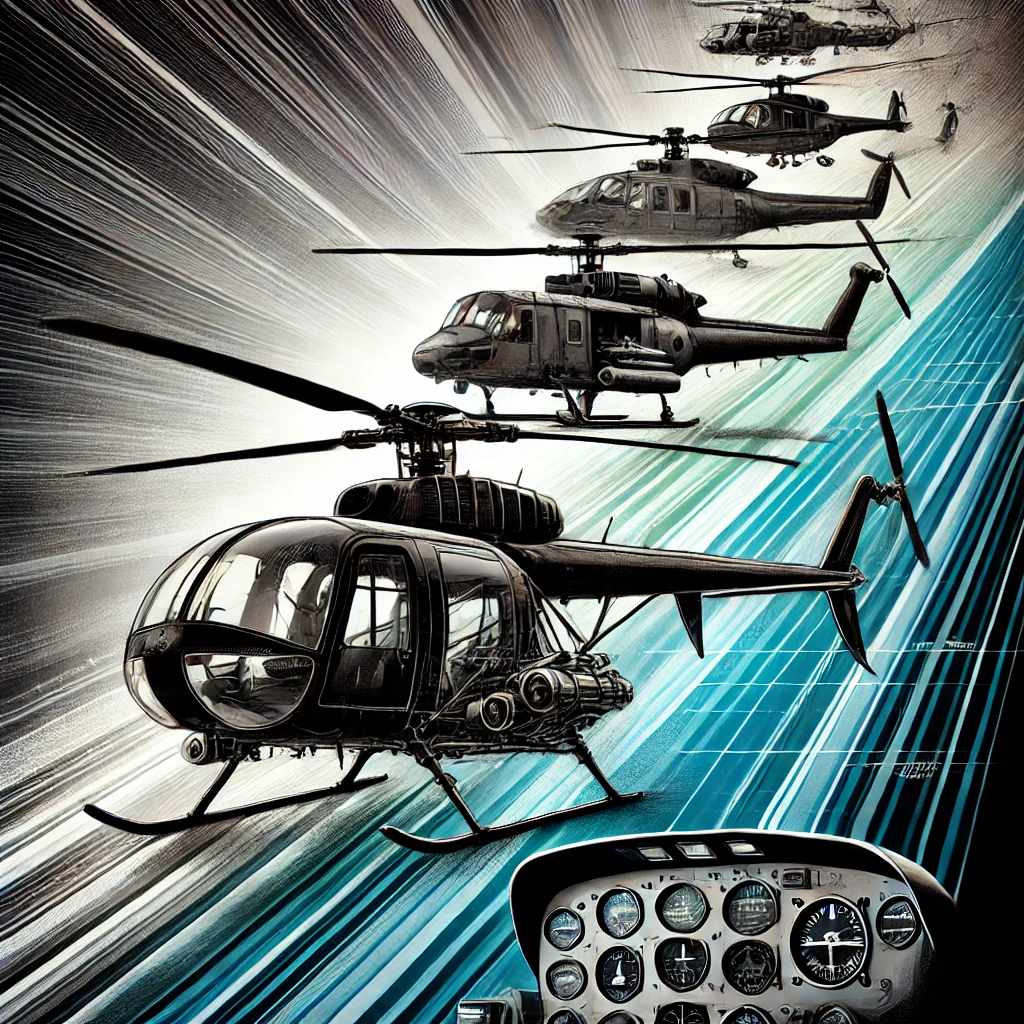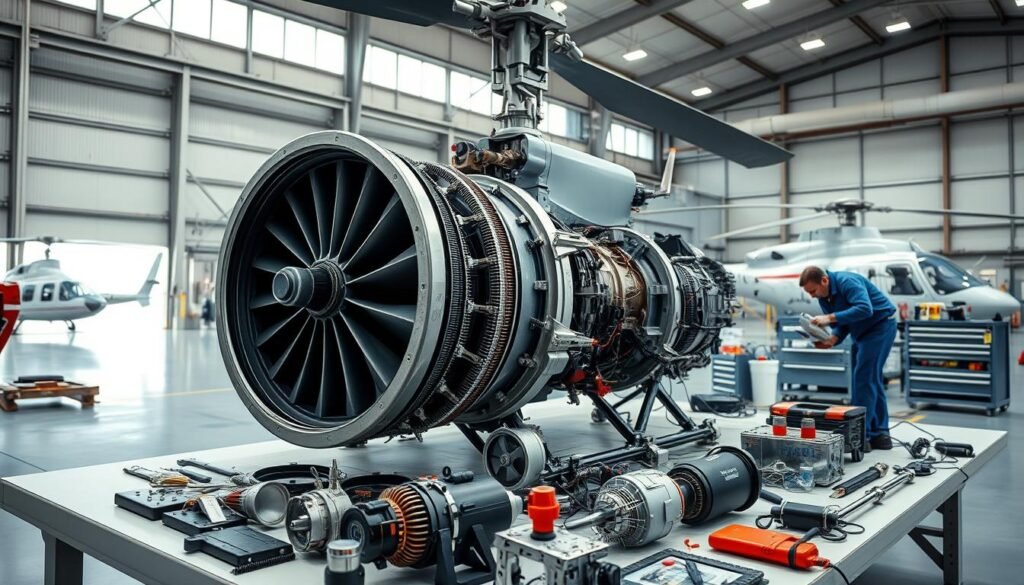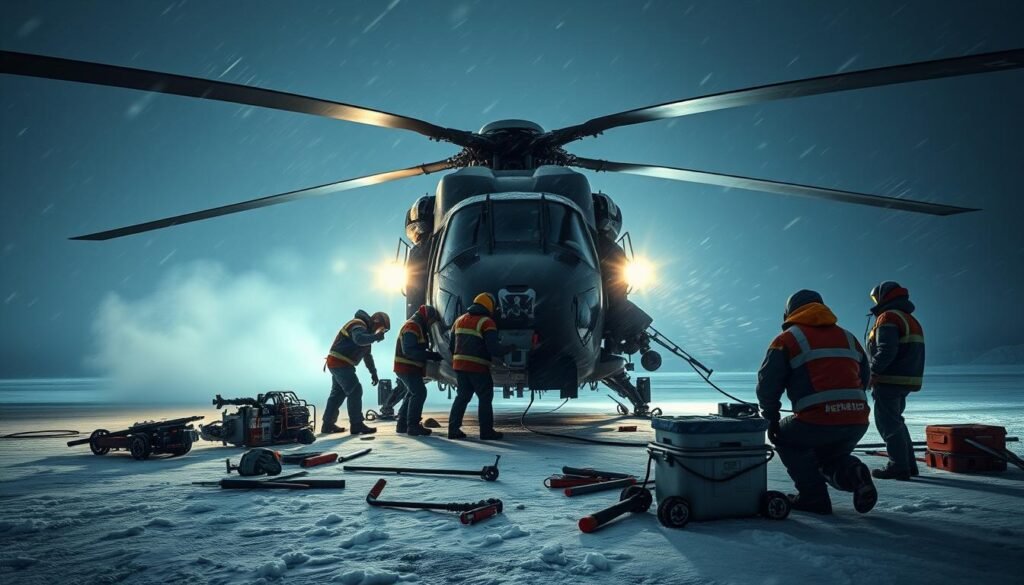The evolution of helicopter technology has been a remarkable journey, transforming early experimental designs into the highly sophisticated and versatile machines we see today. Helicopters have revolutionized industries ranging from military operations to emergency medical services, transportation, and search-and-rescue missions. In this article, we will explore the key milestones in helicopter technology, from the earliest models to the latest innovations.
1. The Early Vision of Vertical Flight
The concept of vertical flight can be traced back centuries, with early thinkers imagining machines capable of lifting off the ground. One of the earliest recorded ideas of a helicopter-like machine came from Leonardo da Vinci in the late 15th century. He sketched a device resembling a helical screw, which he believed could lift off the ground if spun fast enough.
Although da Vinci’s design never left the drawing board, it inspired future inventors and engineers to pursue the dream of vertical flight. By the early 20th century, engineers began making tangible progress toward creating helicopters.
2. The First Practical Helicopters
In the 1930s and 1940s, helicopter development saw significant progress, culminating in the creation of the first practical helicopters. Two pioneers who played a key role during this period were Igor Sikorsky and Heinrich Focke.
- Igor Sikorsky: In 1939, Sikorsky designed and flew the VS-300, considered the first practical single-rotor helicopter. This design incorporated a tail rotor to counteract the torque produced by the main rotor, allowing for stable flight. The VS-300 laid the foundation for future helicopter designs.
- Heinrich Focke: Focke, a German engineer, developed the Focke-Wulf Fw 61 in 1936. This twin-rotor helicopter demonstrated the potential of helicopters for practical use, such as transportation and reconnaissance.
These early helicopters were revolutionary, showing the world that vertical flight was not just a concept but a practical reality.
3. Post-War Advancements and the Birth of Commercial Helicopters
Following World War II, helicopters saw a rapid expansion in their design and application. Advances in materials, aerodynamics, and engineering allowed helicopters to become more reliable, capable, and widely available.
- Bell 47 (1946): One of the most iconic helicopters, the Bell 47, became the first helicopter certified for civilian use. Its simple and durable design made it a favorite for military, medical, and agricultural use. The Bell 47 was also famous for its appearance in popular culture, notably in the TV series MASH*.
- Sikorsky R-4: During the war, Sikorsky’s R-4 became the first mass-produced helicopter, used for medical evacuations, search-and-rescue, and reconnaissance. This marked the beginning of helicopters being used for a wide range of practical applications, from military operations to commercial transport.
By the mid-20th century, helicopters were being used in a variety of industries, cementing their role as versatile, indispensable aircraft.
4. The Introduction of Turbine Engines
A major leap in helicopter technology came with the introduction of turbine engines in the 1950s and 1960s. Turbine engines provided more power, improved reliability, and reduced weight compared to the piston engines used in earlier helicopters.
- Aerospatiale Alouette II (1955): The Alouette II became the first helicopter powered by a gas turbine engine. This innovation allowed for greater lifting capacity, making helicopters more capable in high-altitude and extreme environments.
- UH-1 Huey (1956): The UH-1 Huey, developed by Bell, was another turbine-powered helicopter that became widely known for its role during the Vietnam War. It demonstrated the advantages of turbine engines in military operations, offering increased power, speed, and range.
The introduction of turbine engines marked a new era in helicopter design, leading to improved performance and broader applications.
5. The Emergence of Modern Helicopter Design
By the 1970s and 1980s, helicopters had become essential tools in industries ranging from offshore oil rig transport to emergency medical services and law enforcement. Modern helicopters featured more advanced avionics, improved rotor designs, and enhanced safety systems.
- Boeing CH-47 Chinook (1962): The Chinook is a twin-engine, tandem rotor helicopter known for its heavy-lift capabilities. Its unique design allows it to transport large cargo loads, troops, and even vehicles, making it an invaluable asset in military and humanitarian operations.
- Eurocopter AS350 Écureuil (1975): The AS350 became popular for its versatility in various industries, from tourism to firefighting. Its lightweight design, coupled with advanced avionics, made it one of the most successful commercial helicopters.
As helicopter technology advanced, these aircraft became more reliable and capable of performing complex operations in challenging environments.
6. The Digital Age: Avionics and Automation
The 21st century ushered in a new era of helicopter technology with the rise of advanced avionics and automation systems. Modern helicopters are equipped with digital cockpits, fly-by-wire controls, and sophisticated navigation systems, making flying safer and more efficient.
- Digital Avionics: Today’s helicopters feature glass cockpits with digital displays, providing pilots with real-time information about the helicopter’s performance, weather conditions, and terrain. These systems improve situational awareness and reduce pilot workload.
- Fly-by-Wire Technology: Fly-by-wire systems have replaced traditional mechanical flight controls with electronic systems, offering greater precision and safety during flight.
- Autopilot and Stability Systems: Many modern helicopters are equipped with autopilot systems that help maintain stability, allowing pilots to focus on mission-critical tasks. These systems are particularly valuable in search-and-rescue missions and emergency medical services.
7. The Future: Autonomous Helicopters and Electric Propulsion
Looking forward, the future of helicopter technology is focused on autonomous flight, electric propulsion, and further advances in safety and efficiency.
- Autonomous Helicopters: Unmanned helicopter technology is already being tested for military, cargo, and surveillance applications. Autonomous helicopters can operate in hazardous environments without risking human lives, and they hold promise for the future of urban air mobility.
- Electric Helicopters: With the rise of electric aircraft, companies are working on electric and hybrid-electric helicopters. These aircraft promise to reduce carbon emissions, noise, and operating costs while improving efficiency. Urban air mobility concepts, such as flying taxis, may also rely on electric propulsion.
Conclusion
From early designs inspired by Leonardo da Vinci to the highly advanced helicopters of today, the evolution of helicopter technology has been marked by innovation and groundbreaking advancements. Modern helicopters are safer, faster, and more versatile than ever before, serving critical roles in industries ranging from emergency medical services to military operations and commercial transport. As we look to the future, continued advancements in automation, avionics, and propulsion will undoubtedly shape the next generation of helicopters, making them even more efficient and capable.
Related Articles
- Understanding Helicopter Vibration Analysis: Key to Preventing Major Failures
- How AI and Big Data Are Shaping the Future of Helicopter Maintenance
- Upgrading Helicopter Systems: When and Why to Modernize Your Aircraft
- The Importance of Regular Avionics Checks for Helicopter Performance
- Helicopter Maintenance in Extreme Weather Conditions: What Technicians Need to Know
More from This Category
- Digital Cockpits: How Modern Technology Is Transforming Helicopter Navigation
- The Role of Predictive Maintenance in Helicopter Fleet Management
- Innovative Materials in Helicopter Design: Enhancing Durability and Efficiency
- How Helicopter Technology Is Revolutionizing Emergency Response Operations
- Rotor Blade Maintenance: Why It’s Critical for Safe Flight
- The Future of Autonomous Helicopters: What Technology Holds for the Aviation Industry
- Helicopter Engine Maintenance: Best Practices for Longevity and Efficiency
- How Advances in Avionics Are Improving Helicopter Safety and Performance
- Routine Helicopter Maintenance Checklist: What Every Pilot Should Know
- The Evolution of Helicopter Technology: From Early Models to Modern Innovations



